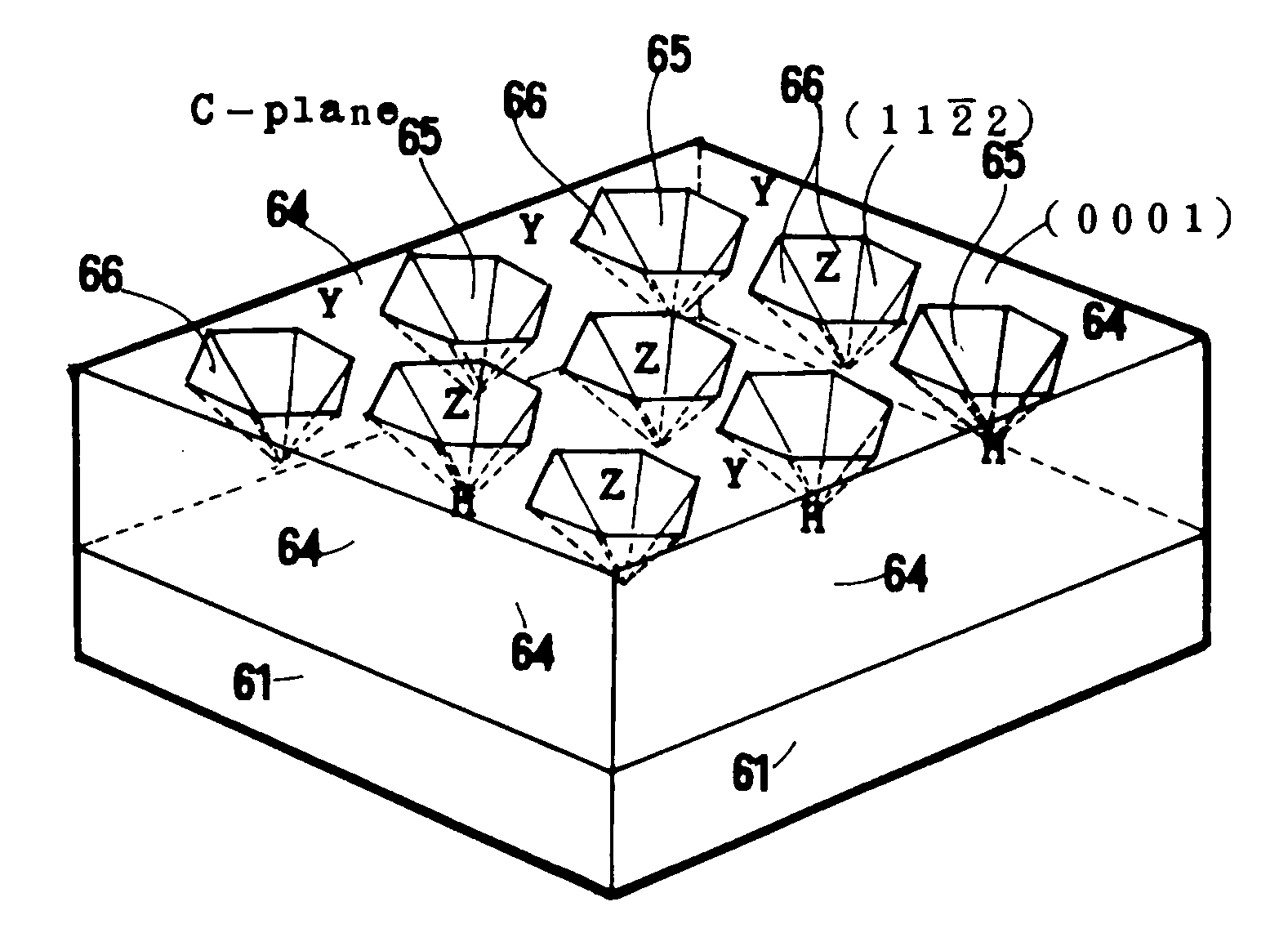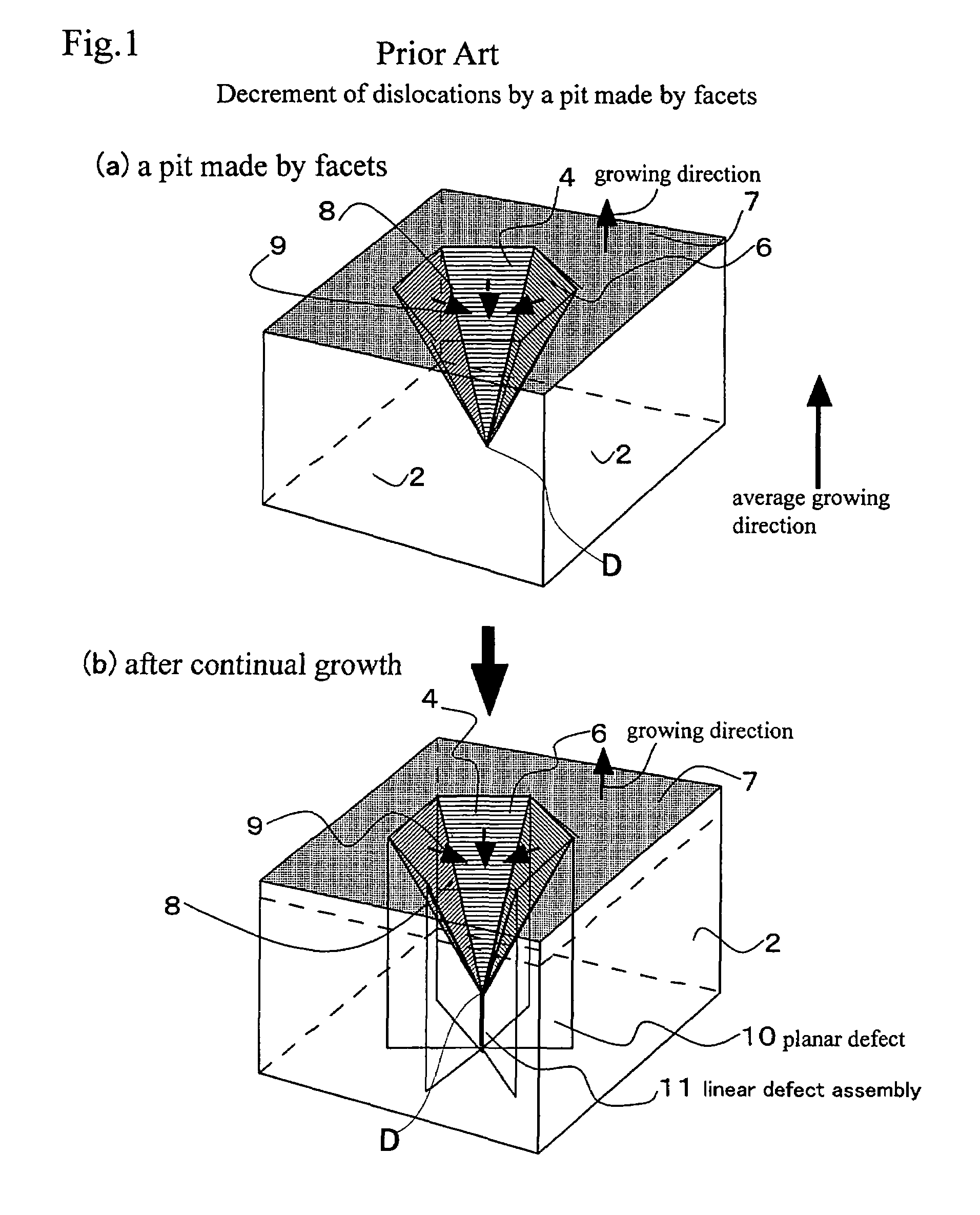Method of growing GaN crystal, method of producing single crystal GaN substrate, and single crystal GaN substrate
a technology of gan crystal and gan film, which is applied in the direction of crystal growth process, polycrystalline material growth, chemically reactive gases, etc., can solve the problems of difficult separation of sapphire substrates from gan films, inability to make gan single crystals, and inability to eliminate sapphire substrates which are chemically stable and physically rigid
- Summary
- Abstract
- Description
- Claims
- Application Information
AI Technical Summary
Benefits of technology
Problems solved by technology
Method used
Image
Examples
embodiment 1
1. Growth of GaN Layers on Undersubstrates
[1. Preparation of Undersubstrates]
[0140]A plurality of three kinds of undersubstrate S1, S2, S3 are prepared. All the three kinds of undersubstrate have circular wafers of a 51 mm (2 inches) diameter.[0141]S1. (0001) sapphire (Al2O3) wafer (top surface is a C-plane)[0142]S2. (111) GaAs wafer (top surface is a Ga-surface; A-plane)[0143]S3. (0001) GaN / sapphire wafer (1.5 μm GaN+sapphire) which has been made by coating a 51 mmφ sapphire wafer on which a 1.51 μm-thick GaN film has been grown by an MOCVD method.
[2. Formation of Dotted Seeding Mask]
[0144]Silicon oxide (SiO2) films of a 0.1 μm thickness are deposited by a plasma CVD method on the three kinds of the undersubstrates. The mask consists of dotted round seeds regularly populated on the undersubstrate.
[0145]The mask seeds are made by photolithography, which has steps of coating the SiO2 / undersubstrates with a resist, exposing the resist via four different stripe patterned photomasks, et...
embodiment
Preferred Embodiment
[0229]Round Wafer[0230]Diameter; 50 mmφ,[0231]Thickness; 400 μm
[0232]Rectangular wafers have an advantage of facilitating the identification of resonator mirror planes in fabricating laser diodes. One of the sides of the rectangular wafers coincides with the resonator mirror planes.
[0233]Circular wafers, which have rotation symmetry, exhibit an advantage of enabling material gases to make uniform streams and to synthesize uniform epitaxial films without epitaxy anomalies. Smaller wafers having a size less than 10 mm induce random gas flows and incur epitaxy anomalies at wafer edges. Large wafers bigger than a 160 mm diameter invite large distortion heights. The present invention takes, for example, gallium arsenide (GaAs) wafers as undersubstrates. The maximum size of the GaAs wafer sold on the market is 150 mmφ (six inches) at present.
(9) Three Dimensional Structure (FIG. 8)
[0234]Widths of the H, Y and Z regions vary in the progress of crystal growth. H and Y di...
example 1 (
TEM OBSERVATION)
[0237]A GaN wafer made by the method of the present invention shows dislocation distribution on H, Z and Y as follows.[0238]H; 1×107 cm−2-2×107 cm−2 [0239]Z; 1×105 cm−2-1×107 cm−2 [0240]Y; 2×104 cm−2-2×105 cm−2
PUM
| Property | Measurement | Unit |
|---|---|---|
| temperature | aaaaa | aaaaa |
| temperature | aaaaa | aaaaa |
| temperature | aaaaa | aaaaa |
Abstract
Description
Claims
Application Information
 Login to View More
Login to View More - R&D
- Intellectual Property
- Life Sciences
- Materials
- Tech Scout
- Unparalleled Data Quality
- Higher Quality Content
- 60% Fewer Hallucinations
Browse by: Latest US Patents, China's latest patents, Technical Efficacy Thesaurus, Application Domain, Technology Topic, Popular Technical Reports.
© 2025 PatSnap. All rights reserved.Legal|Privacy policy|Modern Slavery Act Transparency Statement|Sitemap|About US| Contact US: help@patsnap.com



